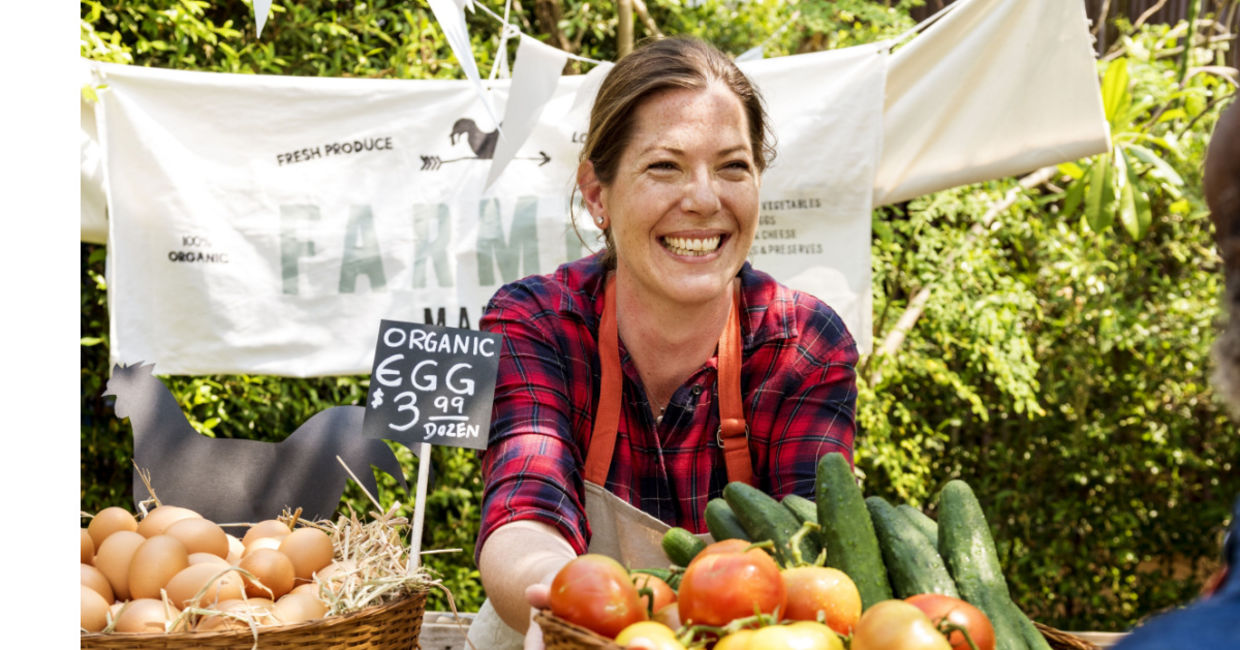
(Rawpixel.com / Shutterstock.com)
Fresh sweet corn and ripe red tomatoes are just two of the vegetables you can find at your local farmers market. Besides buying fresh produce, shopping at a farmer’s market is a way to support local farmers. These local markets are growing in popularity across the US.
Farmers markets operate in parks, pedestrian malls, or fairgrounds on specific days of the week. What makes a farmers market different from a grocery or produce store is that the sellers had a hand in the growing and harvesting of the goods they sell, according to FarmersMarket.net. Building community is also a big part of the appeal of these markets.
Growing in Popularity
Farmers markets have been around for a long time but the number of markets in the US has grown considerably in recent years. According to the USDA Farmers Market Directory, the numbers have grown from 2,000 in 1994 to 8,600 today. This is a major surge in popularity.
Many people began shopping at farmers markets during the Covid-19 pandemic because they could shop outdoors, reported AP News. The Green City Market in Chicago, Illinois, used to have 5,000 to 10,000 shopper’s pre-pandemic and now the numbers are 8,000 to 15,000. In many states, farmers markets were deemed essential services.
Buying local
Many farmers markets have set conditions on what is considered locally grown and this ensures better quality and is good for the environment because it reduces emissions from bringing food from long distances. And with the advent of supply chain issues, local also means available.
“The benefit to shopping at a farmers market is that it’s directly from the farm and so they’re not going to see the same type of supply chain issues [grocery stores have],” Taylor Choy, operations manager at Green City told AP.”
While there is a perception that shopping at a farmers market is expensive due to the small scale of the farms, the opposite can also be true due to inflation. “In fact, I’ve seen the cost of eggs at a grocery store increase, but then our price of our eggs at our market stayed the same,” Choy said.
Farmers markets are also a great way to buy organic food and free-range eggs. The toolkit developed by Farm 2 Facts helps farmers and markets educate their consumers about environmental issues and healthy food, reported The Conversation. This will enable the markets to meet the growing demand for greener agriculture.
Not just for food
The scope of the goods provided at farmers markets also grew during the pandemic. Some due to loss of jobs and for others it was seeing the venue in a new light, reported AP. One of the vendors at Green City Market, Kat Levitt worked in marketing before the pandemic. Now she makes high-quality dehydrated cat and dog treats to sell at a storefront and in her market stall.
Since the market is dog-friendly with hundreds of four-legged visitors every Saturday, the business is a big hit. “It’s [the stall] helping my company grow even further,” Levitt told AP. “It is tremendously impacting how many more customers I’m reaching and the different neighborhoods I’m reaching now.”
Tiffany Lewis started her cookie company during the pandemic and is now a vender at five farmers markets in the Seattle, Washington area. She said, “We get in front of a lot of customers that might not have heard about us otherwise. Customers at farmers markets tend to be there because they want to support local artisans and are willing to pay the price for excellence.”
So the next time you want to buy some salad greens, watermelon, or maybe some dog treats, shop at a local farmers market and see what the hype is all about.
YOU MIGHT ALSO LIKE:
Enjoy Clean Eating With These Fruits and Veggies
Purchasing Delicious and Healthy Produce Just Got Easier
Canadian Hydroponic Farm has a Drive-Through for Fresh Vegetables







